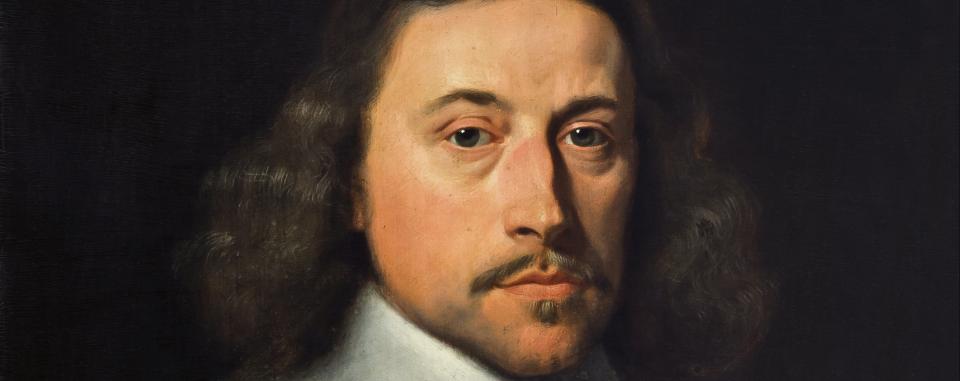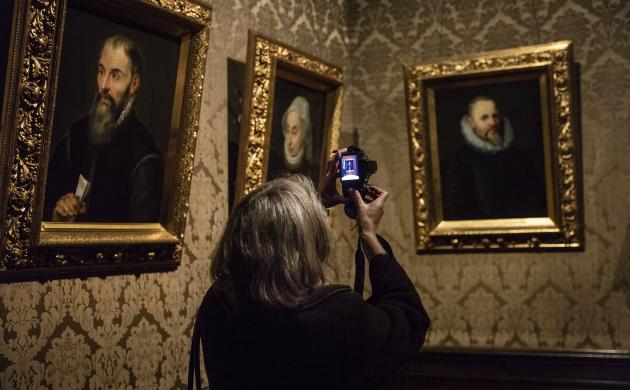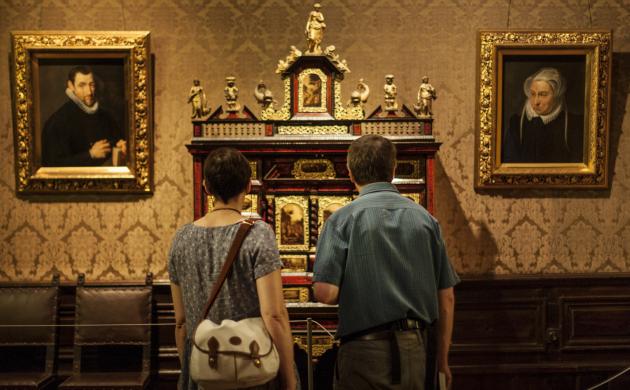The successors of Balthasar I Moretus carried on publishing liturgical books. When the Spanish crown withdrew their printing privileges in 1764, it came as a shock. French annexation was the final blow. The printing business remained open, but refused to modernise. Eventually, Edward Moretus sold the works to the City of Antwerp in 1876.
Balthasar II Moretus, the son of Jan II Moretus, took over the running of the Plantin publishing house on the death of Balthasar I Moretus, who had remained single...
Balthasar II Moretus (1615-1674)
Although Balthasar II Moretus initially continued to publish numerous historical and literary works, the proportion of religious editions had risen to nearly 100% by the time of his death in 1674. The highly lucrative nature of the exporting of liturgical works to Spain led to the Plantin press discontinuing all other printing work.
Balthasar III Moretus (1646-1696)
The head of the Officina Plantiniana from 1674 to 1696. On 1 September 1692 he was ennobled by the King of Spain, receiving the title of jonkheer. The age of humanism was by now over. Production consisted almost exclusively of liturgical works, both for domestic sales and for the entire Hispanic world.
Balthasar IV Moretus (1679 - 1730)
Head of the Officina Plantiniana from 1696 to 1730. Under his control, the output continued to consist mainly of liturgical works.
Joannes Jacobus Moretus (1690-1757)
Head of the Officina Plantiniana from 1730 to 1757. Production continued to be restricted to liturgical works. He invested the proceeds from the highly lucrative business in highly successful financial transactions. The Moretus family also married into other wealthy families, becoming one of the richest families in Antwerp.
Franciscus Joannes Moretus (1717 - 1768)
Head of the Officina Plantiniana from 1757 to 1768. On 3 June 1764, King Charles III of Spain withdrew all privileges still held by foreign printers. As a result, sales on the Spanish market, the financial backbone of the Moretus business, gradually dried up. The Officina Plantiniana never recovered. Moreover, Franciscus Joannes Moretus died prematurely in 1768.
Maria Theresia Borrekens (1728 - 1797)
Maria Theresia Borrekens, the widow of Franciscus Joannes Moretus, kept the business going after the death of her husband from 1768 to 1797. She ran it with great skill, but was unable to reverse the decline of the press and publishing house. French annexation in 1795 was the final blow. A period of virtual non-activity ensued. The business was continued by three sons.
Jacob Paul Moretus (1756-1808), Frans-Jozef Moretus (1760-1814) and Lodewijk-Frans Moretus (1758-1820)
Jacob Paul Moretus was the head of the Officina Plantiniana from 1797 to 1808. After his death, his brother Frans-Jozef Moretus ran the business until 1814. The third brother, Lodewijk-Frans Moretus, restarted the Plantin printing press in 1816. However, he failed to modernise the business with new metal printing presses, which came into use in the late 18th century. On his death in 1820, the Officina Plantiniana went to his nephew Albert; by this time, it was an obsolete, third-rate business.
Albert Moretus (1795 - 1865)
Head of the Officina Plantiniana from 1820 to 1865. Albert Moretus tried to reinvigorate the business in 1828, but he too failed to modernise.
Edward Moretus (1804 - 1880)
Head of the Officina Plantiniana from 1865 to 1876. He inherited the company from Albert Moretus on 1 April 1865, but was likewise not interested in modernisation. In 1866, the press issued its last book, Horae diurnae S. Francisci. A year later, only loose-leaf items were still being printed. Edward Moretus stopped all activity at this point, although he was still paying for a printer’s licence in 1871. He sold the site to the City of Antwerp with a view to the creation of a museum. The museum was opened to the public on 19 August 1877.



